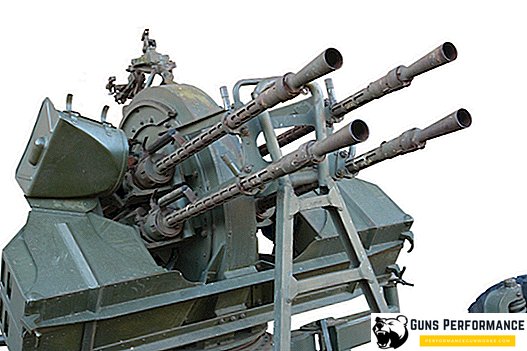The times when humankind could quietly enjoy those earthly blessings that nature gave our planet in abundance have sunk into oblivion. Every year on the globe there are fewer and fewer areas where clean air could be preserved, crystal clear water, and flora and fauna remained intact. This is facilitated by a number of factors, each of which has its own nature of origin. However, not only man is guilty of the fact that his home planet Earth gradually ceases to be an earthly paradise, turning into a hostile and aggressive environment. Nature itself during natural processes participates in the pollution of the atmosphere, producing substances that pollute the air, changes the river beds, the surface relief and the landscape. The combination of many natural and artificially created factors, the growth of their number becomes the main cause of environmental degradation of the environment. The danger of air pollution, polluted air today is becoming the norm.
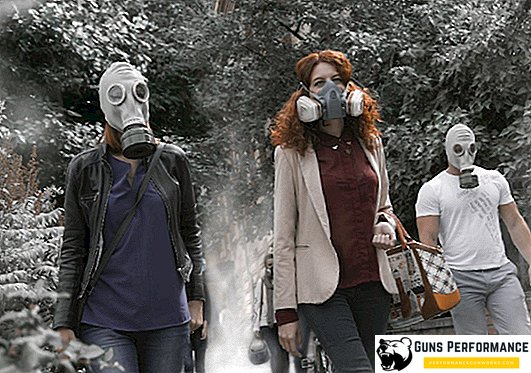
The problem of air pollution - the challenge of human civilization
The problem of deteriorating air quality today is no less relevant than the arms race and the fight against the global terrorist threat. If the world community is able to cope with deadly types of weapons and terrorism on its own, then the pollution of the atmosphere brings the threat of total extinction to humanity. Such problems are protracted, global in nature, threatening the existence of subsequent generations.

The main danger is that as a result of the ingress of harmful substances and components into the air envelope of the planet, the chemical composition of the air changes. This leads to the fact that significantly change the conditions of human habitation and living organisms, catastrophically rapidly changing climatic situation on the planet.
If we talk about the role of man in the emerging deterioration of air quality, then the blame for the rapidly developing industry. Human activities, mainly aimed at creating civilizational benefits, caused artificial pollution of the atmosphere. The industrial revolution, which began in the XIX century, led to a rapid increase in the amount of harmful emissions. Over the past 200 years, the concentration of carbon dioxide has increased by 30-35%. This was facilitated by large-scale deforestation and burning in huge quantities of organic fuels. Ultimately, global industrialization led to large-scale environmental problems, the polluted air became a constant companion of the current human civilization.

Virtually all types of human activity affect air quality. To industrial emissions, added work products of thermal power plants and an increase in the number of cars. When burning fossil fuels, sulfur dioxide is released in huge quantities, and millions of working car engines emit hundreds of tons of nitric oxide into the atmosphere. In addition to chemicals that are harmful and harmful to living organisms, as a result of human activity, our air is rapidly filled with soot and dust.
For a long time, the situation in this regard has not changed. Human civilization was too passionate about the pursuit of improving the quality of life and creating consumer products. Only at the end of the 20th century did the full gravity of the planet’s environmental problems become apparent. In order to understand the problems of the issue, just look at the current statistics. In 150 cities of the world, there is an excess of the maximum permissible concentration of harmful substances in the air 5 times. More than 100 cities of the planet according to the concentration of compounds of harmful substances in the air in general can be counted as unsuitable for humans places.
In this aspect, it is important to consider the pollution of the atmosphere as it affects the quality of our life. The increase in the content of harmful impurities in the air immediately affects the work of the human body. Inhaling carbon monoxide (carbon dioxide), you can get the strongest poisoning, bordering on the lethal outcome. Heavy metals in high concentrations are harmful to humans. Penetrating into the atmosphere, they are highly toxic. Fertile ozone, which is so necessary for our planet, in great concentration also poses a threat to the human body. Dust, fumes and fine compounds are carcinogenic, slowly poisoning the environment.
Changes in the chemical composition of the air invariably entail a climate change on the planet. The familiar picture of a smooth change of seasons today is becoming a rarity. In those regions of the planet where warm and mild winters were previously observed, low temperatures and large-scale cooling periods become frequent. In the tropics, instead of the wet monsoon season, a sharp increase in dry periods is observed. Climate change leads to a decrease in the area of agricultural land, to a reduction in the number of pastures. Against this background, there is the problem of providing the population of the planet with food. Hunger is almost the main secondary factor in climate change on the planet. Sharp climate change contributes to the development of a number of dangerous diseases that people face today.

A direct consequence of climate change is an intensive reduction in the area of glaciers in the mountain systems, intensive melting of the ice shell of Greenland and the Antarctic ice sheet occurs. These processes entail rising sea levels, changes in the hydrological situation in coastal areas. Inert gases present in the products of the chemical industry have an indirect effect on the state of the atmosphere. Getting into the upper atmosphere, they destroy the ozone layer, which is for us a living shield from the hard space ultraviolet.
Causes of air pollution
In general, the quality of air mass is influenced by an increase in the concentration of chemical, physical, and biological components uncharacteristic of natural gas exchange. These processes occurred and continue to occur naturally, but in recent years, human participation in air pollution has noticeably increased.

In other words, the causes contributing to the pollution of the Earth’s atmosphere can be divided into two types:
- natural;
- artificial (man-made).
Against the background of this division, there is also a classification of sources of pollution, which can also have a natural and artificial nature.
For billions of years, the earth's atmosphere has been influenced by the active geological activity of our planet. Volcanoes constantly emitted into the atmosphere millions of tons of harmful and toxic impurities. There are many tragic moments in the history of the Earth when large-scale eruptions led to catastrophic consequences. Clouds of poisonous ash fell into the upper atmosphere, polluted air became an obstacle to solar radiation. As a result, the hot and humid climate gave way to a sharp cooling, which ended with the mass extinctions of some species and the appearance of others. Volcanic activity has the character of thermal pollution of the atmosphere, resulting in a significant imbalance of temperature on the surface of the planet.
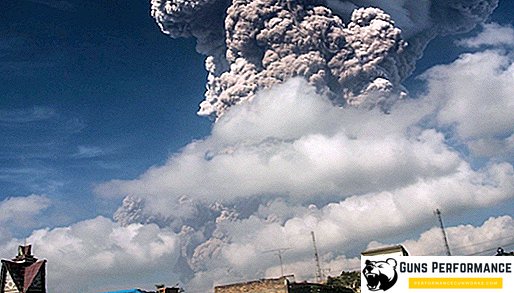
The catastrophic eruption of the volcano Krakatau, which occurred in 1883, not only changed the relief and landscape of the whole island, but also led to a significant release into the earth's atmosphere of billions of tons of ash and dust. As a result of the spread of such a number of solid particles in the lower and middle layers of the atmosphere, the level of natural illumination of the surface of the entire planet has noticeably dropped. Over the next two years, early twilight was observed around the world, and the air temperature dropped by 0.5-1 degrees.
Together with volcanoes, forest fires, sandstorms, and natural soil erosion can be easily attributed to natural sources of air pollution. Finally, the chemical composition of the air mass is influenced by the centuries-old decomposition of organic matter accumulated in the upper layers of the earth's surface. The source of pollution is forest fires that burn at all times in vast areas that fill the air with carbon monoxide gas and a huge amount of burning and ash. Sandstorms promote mixing of the lower air layer with millions of tons of sand and dust, reducing the humidity of the air and making it unsuitable for breathing.
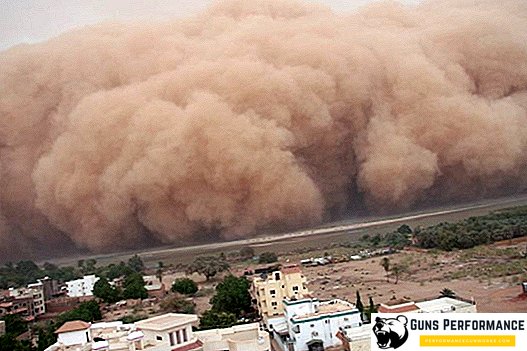
Despite this, nature itself has adapted to deal with such negative phenomena, while maintaining the necessary balance of components in the atmosphere. As for the human factor, artificially created factors of pollution of the earth's air envelope are entering the arena. This category of pollution factors is characterized by the presence of anthropogenic sources. These primarily include industrial emissions, transport infrastructure, extensive agriculture, and household waste. These sources are most dangerous for our air, as nature is not always able to quickly cope with negative consequences. Pollutants entering the atmosphere from anthropogenic sources are divided in turn into three types:
- solid;
- gaseous;
- semi-liquid state.
The negative and harmful effects of solid particles and substances in the semi-liquid state of a short time, often is local. As for gaseous impurities, they constitute 90% of all harmful substances entering the atmosphere of the planet.
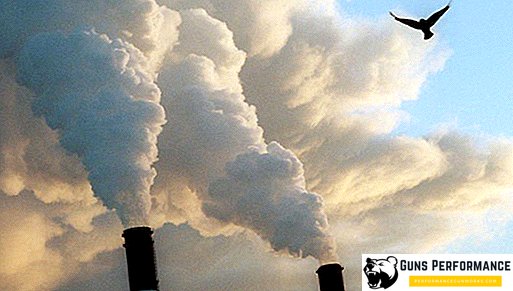
Major anthropogenic sources of air pollution
Today, artificial sources of pollution that have a negative effect on the chemical and physical composition of air are classified by origin. It looks like this:
- technological, industrial sources of pollution;
- household infrastructure;
- transport;
- sources of radioactive air pollution.
One of the first positions among artificial sources of pollution is the chemical industry, which is characterized by an increased concentration of objects in a limited area. This leads to intense and rapid air pollution in certain areas. In this case, we are dealing with a unique phenomenon. Contaminated air becomes dangerous for humans, not only due to large volumes of harmful emissions. Chemicals trapped in the air layer react with each other to form highly toxic substances and compounds. A vivid example is the formation and concentration in the lower atmosphere of ozone, which is dangerous and harmful to humans.

To a large extent, a negative trace in the atmosphere leaves heavy industry. The increase in the number of mining and processing plants, enterprises of ferrous metallurgy and thermal power plants, leads to an increase in the concentration of carbon monoxide, sulfur dioxide, carbon dioxide, and a number of other heavy components in the air mass.
In the domestic sphere, the use of freon certainly makes a significant contribution to air pollution. The mass production and operation of refrigeration, the use of aerosols in everyday life contributes to a high concentration of inert gases in the mesosphere and in the stratosphere of our planet, destroying the ozone layer.

The transport infrastructure is characterized by a high intensity of harmful emissions, among which millions of tons of carbon monoxide, nitrogen compounds and hydrocarbons prevail. Atmospheric pollution by exhaust gases occurs against the background of the daily operation of hundreds of millions of cars equipped with internal combustion engines. The air is filled with heavy metals, among which are tetraethyl lead, cadmium and mercury hazardous to human health. According to the latest data from environmental organizations, in every large metropolis polluted air contains lead and mercury compounds 20-40 times more than the established norm.
Recent, radioactive sources of airspace pollution are a hidden threat. The action of radioactive elements and infected particles on living organisms manifests itself over time. Radioactive pollution of the atmosphere is, as a rule, man-made in nature and is associated with testing of nuclear weapons, accidents at nuclear power plants and at facilities where radioactive components are used as research material.
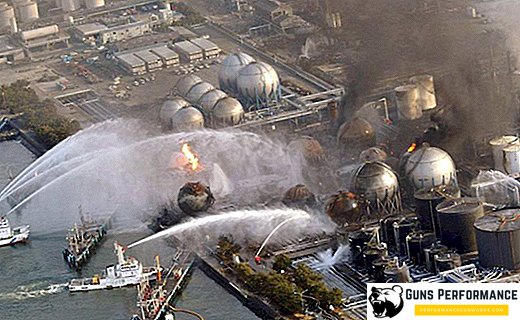
Air pollution is an environmental issue.
To date, the person is directly confronted with the negative consequences that are entailed by a sharp deterioration in air quality. The main effect of what is happening - harm to human health and other living organisms. Habitat, in which today the population of huge cities and densely populated areas of the planet turned out to be, is becoming unsuitable for a comfortable life. Breathing in on average during the day up to 20 thousand liters of air, a person gets inside him up to 1-2 liters of harmful solid impurities and 5-50 mg. heavy metals. Most of this amount remains in the body, having a negative effect on human health.
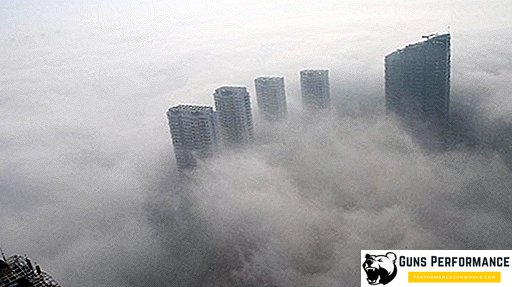
Today, smog and photochemical fog become an obligatory attribute of large cities. What is the reason? Gases, which appear in large numbers as a result of the life activity of a megacity, cannot arbitrarily rise to the upper layers of the atmosphere and settle in the surface layer. Under the influence of temperature, high humidity and solar radiation in such a gas and dust cloud, toxic compounds are formed that disrupt the functioning of human lungs, preventing plant photosynthesis. Photochemical fog is a new phenomenon and is associated with a high concentration in the lower layers of the atmosphere of primary and secondary compounds consisting of aerosols, sulfur oxide, nitrogen and organic substances.
At the same time, addressing the problem of atmospheric pollution on a global scale, one should speak about the increasing frequency of acid rain and the greenhouse effect, which became the scourge of the 21st century. Acid rain makes unsuitable for use huge tracts of agricultural land, causing the death of huge forests. Excess carbon dioxide concentration in the planet’s atmosphere leads to the formation of the greenhouse effect. The temperature of the lower air layers increases, and the meteorological conditions in the lower and middle air layers change accordingly.
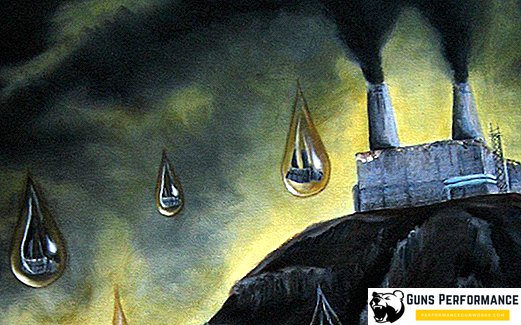
Pollution control measures
The problem of air pollution and the atmosphere of the Earth today is becoming global. To overcome the ecological crisis, a person throws huge funds aimed at finding solutions to problematic issues and eliminating the consequences. At present, air pollution is being actively monitored both at the domestic level and in the international, national context. Air pollution is constantly monitored.
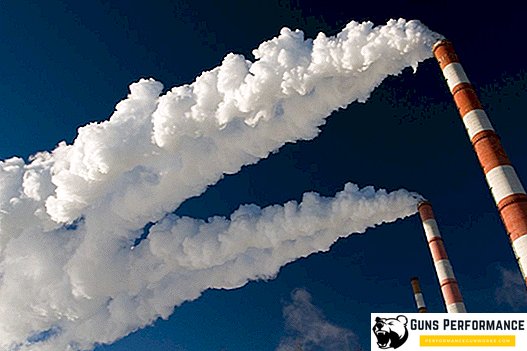
In many countries where the size of the environmental crisis has reached an alarming scale, various programs are being implemented to reduce the level and intensity of industrial emissions. In a number of states, control over the operation of nuclear facilities and chemically hazardous industries has increased. Deforestation of tropical forests, which are responsible for replenishing the air with oxygen, is decreasing. In parallel with this, intensive recultivation of land and water resources in agriculture is being conducted, aimed at the restoration of natural resources. The use of chemically harmful reagents and biologically active components in agriculture is decreasing.



